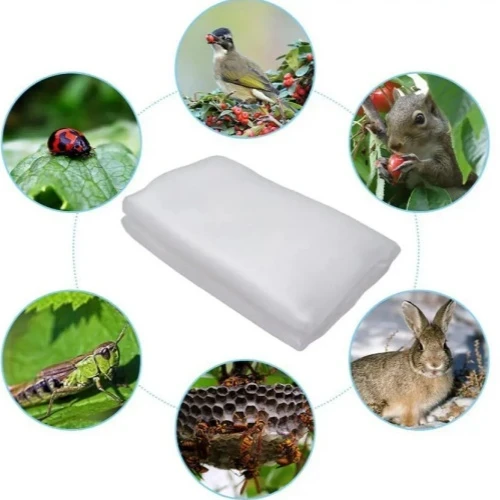-
 Afrikaans
Afrikaans -
 Albanian
Albanian -
 Amharic
Amharic -
 Arabic
Arabic -
 Armenian
Armenian -
 Azerbaijani
Azerbaijani -
 Basque
Basque -
 Belarusian
Belarusian -
 Bengali
Bengali -
 Bosnian
Bosnian -
 Bulgarian
Bulgarian -
 Catalan
Catalan -
 Cebuano
Cebuano -
 China
China -
 Corsican
Corsican -
 Croatian
Croatian -
 Czech
Czech -
 Danish
Danish -
 Dutch
Dutch -
 English
English -
 Esperanto
Esperanto -
 Estonian
Estonian -
 Finnish
Finnish -
 French
French -
 Frisian
Frisian -
 Galician
Galician -
 Georgian
Georgian -
 German
German -
 Greek
Greek -
 Gujarati
Gujarati -
 Haitian Creole
Haitian Creole -
 hausa
hausa -
 hawaiian
hawaiian -
 Hebrew
Hebrew -
 Hindi
Hindi -
 Miao
Miao -
 Hungarian
Hungarian -
 Icelandic
Icelandic -
 igbo
igbo -
 Indonesian
Indonesian -
 irish
irish -
 Italian
Italian -
 Japanese
Japanese -
 Javanese
Javanese -
 Kannada
Kannada -
 kazakh
kazakh -
 Khmer
Khmer -
 Rwandese
Rwandese -
 Korean
Korean -
 Kurdish
Kurdish -
 Kyrgyz
Kyrgyz -
 Lao
Lao -
 Latin
Latin -
 Latvian
Latvian -
 Lithuanian
Lithuanian -
 Luxembourgish
Luxembourgish -
 Macedonian
Macedonian -
 Malgashi
Malgashi -
 Malay
Malay -
 Malayalam
Malayalam -
 Maltese
Maltese -
 Maori
Maori -
 Marathi
Marathi -
 Mongolian
Mongolian -
 Myanmar
Myanmar -
 Nepali
Nepali -
 Norwegian
Norwegian -
 Norwegian
Norwegian -
 Occitan
Occitan -
 Pashto
Pashto -
 Persian
Persian -
 Polish
Polish -
 Portuguese
Portuguese -
 Punjabi
Punjabi -
 Romanian
Romanian -
 Russian
Russian -
 Samoan
Samoan -
 Scottish Gaelic
Scottish Gaelic -
 Serbian
Serbian -
 Sesotho
Sesotho -
 Shona
Shona -
 Sindhi
Sindhi -
 Sinhala
Sinhala -
 Slovak
Slovak -
 Slovenian
Slovenian -
 Somali
Somali -
 Spanish
Spanish -
 Sundanese
Sundanese -
 Swahili
Swahili -
 Swedish
Swedish -
 Tagalog
Tagalog -
 Tajik
Tajik -
 Tamil
Tamil -
 Tatar
Tatar -
 Telugu
Telugu -
 Thai
Thai -
 Turkish
Turkish -
 Turkmen
Turkmen -
 Ukrainian
Ukrainian -
 Urdu
Urdu -
 Uighur
Uighur -
 Uzbek
Uzbek -
 Vietnamese
Vietnamese -
 Welsh
Welsh -
 Bantu
Bantu -
 Yiddish
Yiddish -
 Yoruba
Yoruba -
 Zulu
Zulu
bird prevention netting
Bird Prevention Netting A Sustainable Solution for Crop Protection
In recent years, the agricultural industry has faced numerous challenges, one of which is the significant damage caused by birds to crops. Farmers invest considerable time, effort, and resources into cultivating their crops, only to find them at risk from hungry flocks. This has led to the rise of bird prevention netting as an effective and sustainable solution for safeguarding agricultural yields.
Bird prevention netting, often made from lightweight, durable materials like polyethylene or nylon, serves as a physical barrier to keep birds away from vital crops. These nets are designed to allow sunlight, moisture, and air to penetrate while preventing birds from accessing the fruits, seeds, and vegetables that farmers work tirelessly to grow. The implementation of such netting can dramatically reduce crop loss, enhancing the overall productivity of farms.
One of the primary benefits of bird prevention netting is its environmental impact
. Unlike chemical repellents and other hazardous measures, netting is a non-toxic method that poses minimal risk to wildlife and the surrounding ecosystem. It effectively addresses the problem of birds without harming them or other beneficial wildlife that might coexist in agricultural areas. Furthermore, as the world becomes increasingly aware of sustainability and environmentally friendly practices, netting presents a viable option for farmers seeking to maintain biodiversity on their farms.bird prevention netting

The versatility of bird netting is also noteworthy. It comes in various sizes, mesh configurations, and colors, allowing farmers to select the best option for their specific crops and local bird species. Whether it’s protecting berry bushes, orchards, or grain fields, bird netting can be tailored to meet individual needs. Additionally, it can be easily installed and removed, providing flexibility for farmers as they adapt their strategies throughout the growing season.
Another advantage of bird prevention netting is its long-term cost-effectiveness. While the initial investment in quality netting can be significant, the protection it offers can lead to substantial savings in terms of crop loss. Moreover, by ensuring higher yields, farmers can enhance their overall profitability. The durability of the netting also means that it can be reused for many growing seasons, further increasing its value.
Challenges do exist with bird netting, such as the potential for entrapment of non-target species or the difficulty of installation. However, with proper planning and consideration, these issues can be mitigated. Educating farmers on best practices for installation and maintenance is crucial to maximizing the benefits of bird netting while minimizing any unintended consequences.
In conclusion, bird prevention netting stands out as a sustainable, effective solution for protecting crops from avian threats. From its minimal environmental impact to its long-term cost benefits, netting offers farmers a reliable alternative to traditional methods. As the agricultural sector continues to innovate, the adoption of bird netting will likely play a vital role in promoting both productivity and sustainability in farming practices.
-
Shipping Plastic Bags for Every NeedNewsJul.24,2025
-
Safety Netting: Your Shield in ConstructionNewsJul.24,2025
-
Plastic Mesh Netting for Everyday UseNewsJul.24,2025
-
Nylon Netting for Every UseNewsJul.24,2025
-
Mesh Breeder Box for Fish TanksNewsJul.24,2025
-
Expanded Steel Mesh Offers Durable VersatilityNewsJul.24,2025











